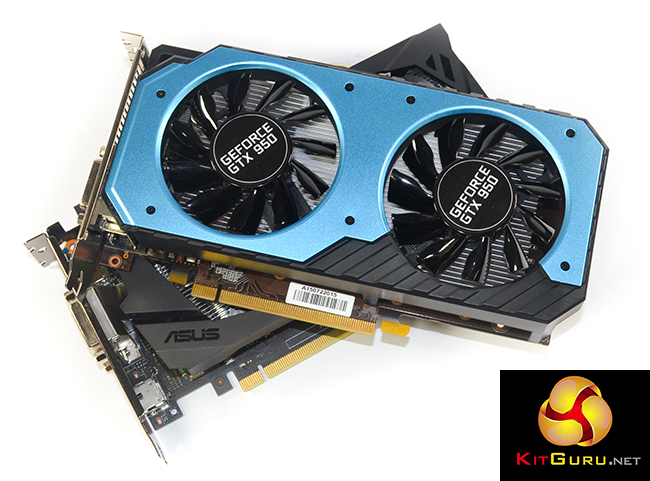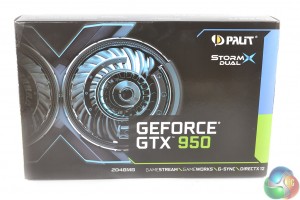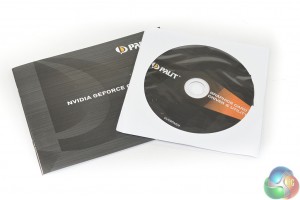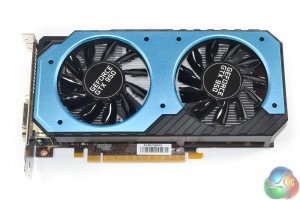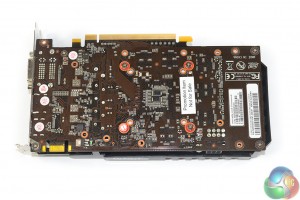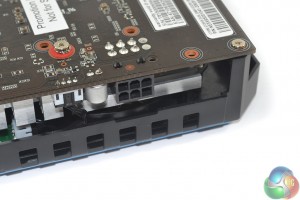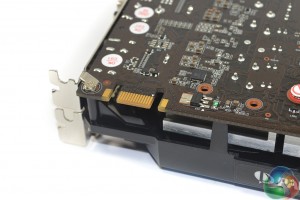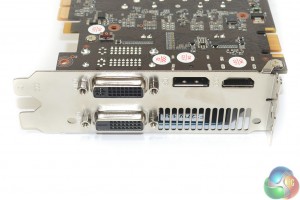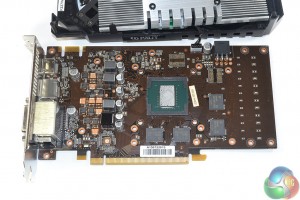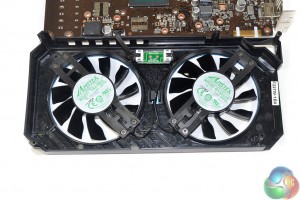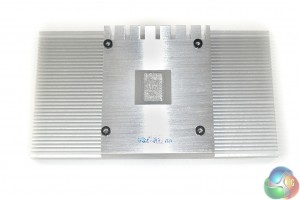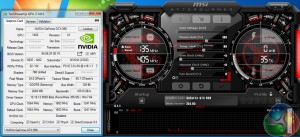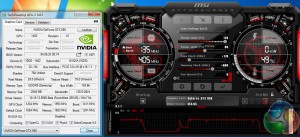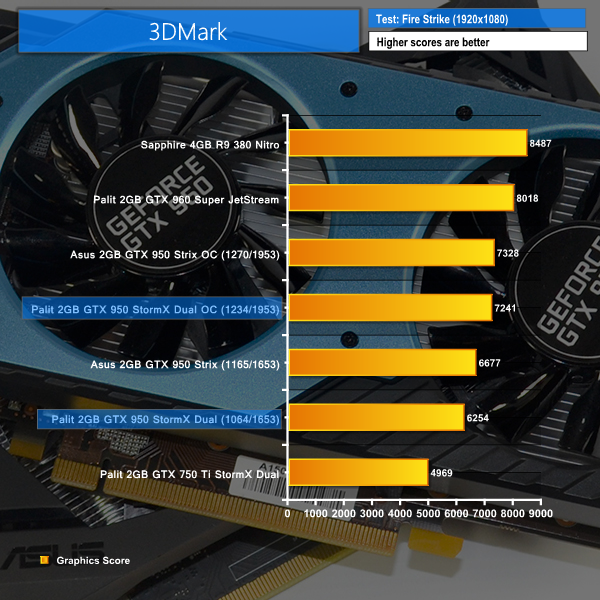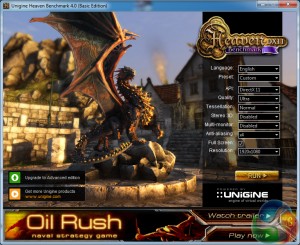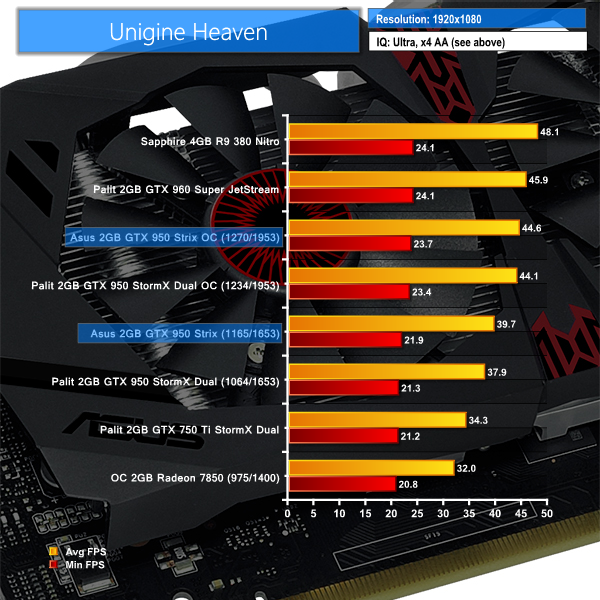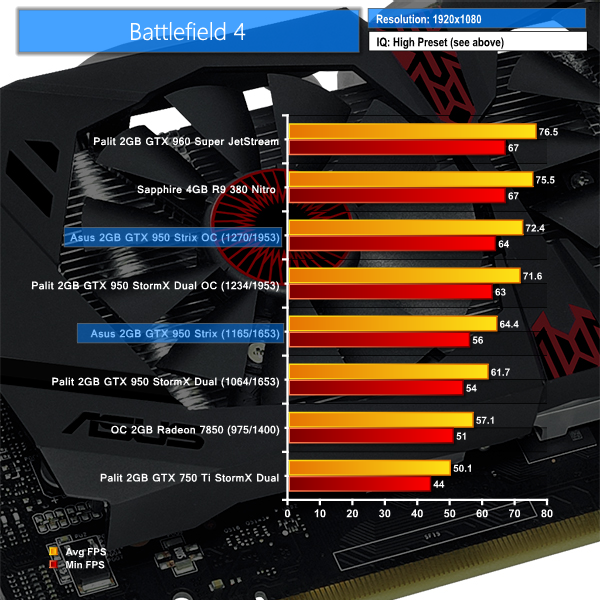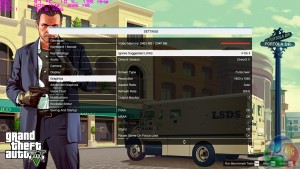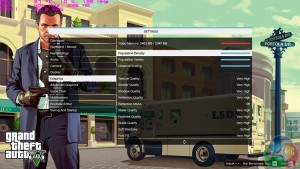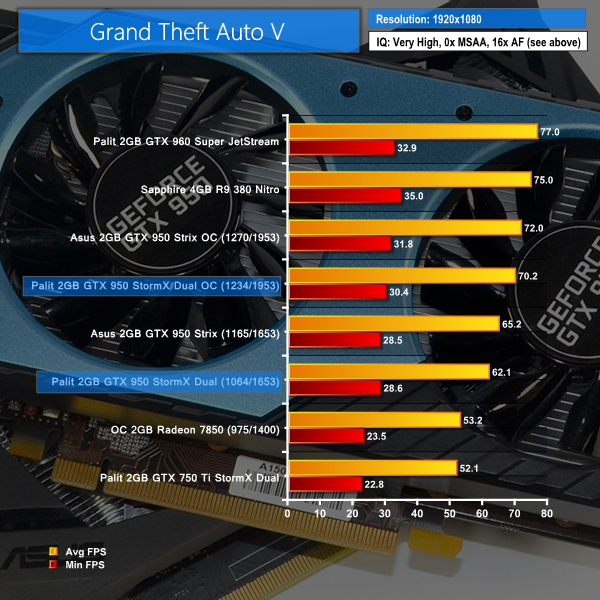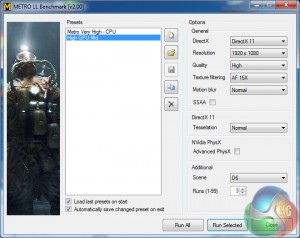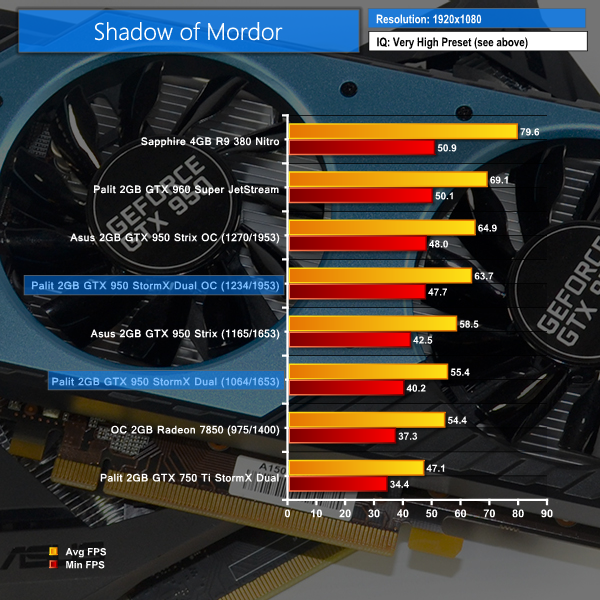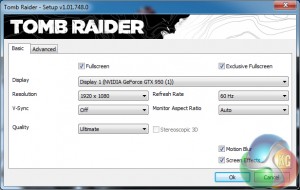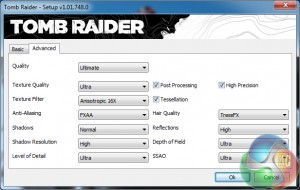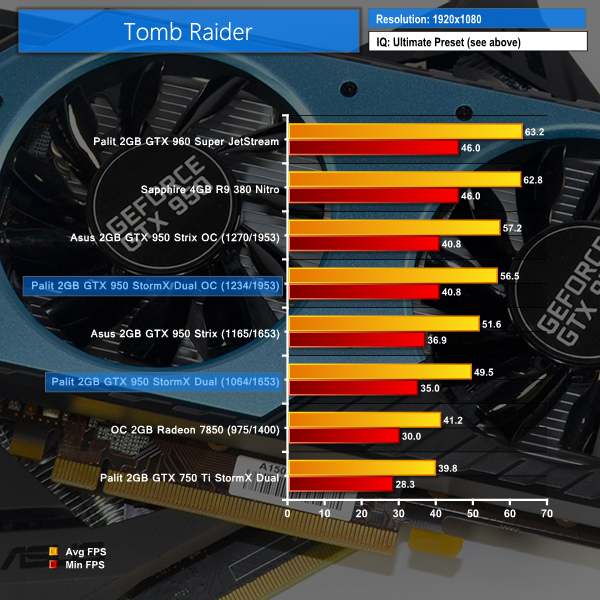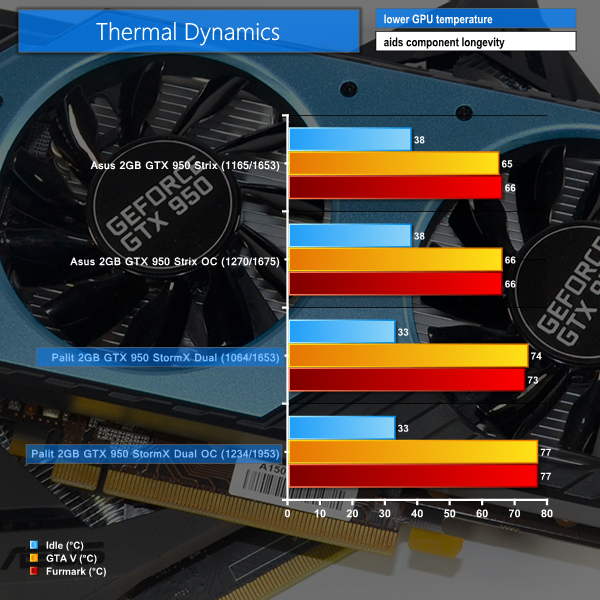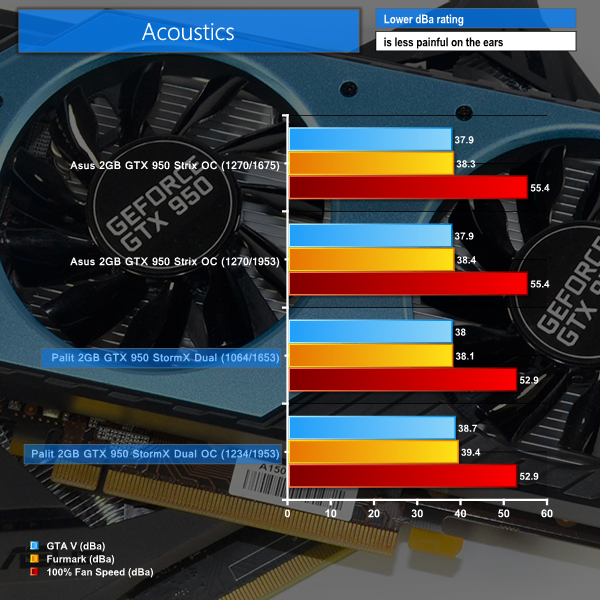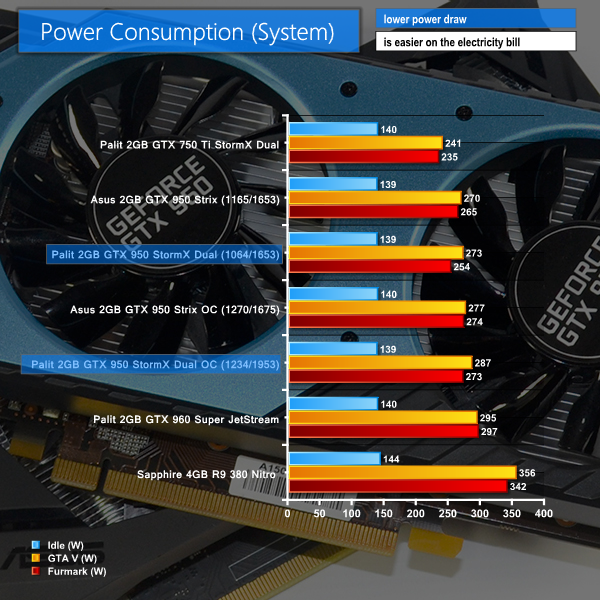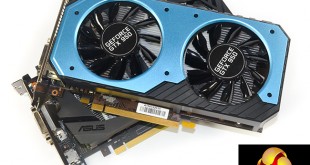
Nvidia has launched the GTX 950 to combat AMD's R7 370 at the £129 price point. We take a look at Palit's factory-overclocked, dual-fan GTX 950 2GB StormX Dual graphics card to see what sort of performance the solution can offer.
We have taken a more in-depth look at the GTX 950 GPU in our review of the Asus STRIX model. This review will focus on the performance of Palit's GTX 950 StormX Dual solution.
The Palit GTX 950 StormX Dual graphics card uses a dual-slot cooler with two 80m fans. This is similar to what we saw with Asus' STRIX model, and it is representative of what we expect to see from many Nvidia partners shipping their factory-overclocked unit.
Referencing the newly-released GPU, Nvidia says that the GTX 950 is designed to offer the best performance in its class. With an MSRP of £129 and a TDP of 90W, the GTX 950's goal is to beat AMD's similarly-priced R7 370 while using less power to do so. Both in terms of TDP and price, the GTX 950 is sat directly between its GTX 750 Ti and GTX 960 siblings, both of which will remain in Nvidia's current product stack.
| GPU | GeForce GTX 750 Ti (Maxwell) |
GeForce GTX 950 (Maxwell) |
GeForce GTX 960 (Maxwell) |
GeForce GTX 970 (Maxwell) |
GeForce GTX 980 (Maxwell) |
| GPU Codename | GM107 | GM206 | GM206 | GM204 | GM204 |
| Streaming Multiprocessors | 5 | 6 | 8 | 13 | 16 |
| CUDA Cores | 640 | 768 | 1024 | 1664 | 2048 |
| Base Clock | 1020 MHz | 1024 MHz | 1126 MHz | 1050 MHz | 1126 MHz |
| GPU Boost Clock | 1085 MHz | 1188 MHz | 1178 MHz | 1178 MHz | 1216 MHz |
| Total Video memory | 2GB | 2GB | 2GB | 4GB | 4GB |
| Texture Units | 40 | 48 | 64 | 104 | 128 |
| Texture fill-rate | 40.8 Gigatexels/sec | 49.2 Gigatexels/sec | 72.1 Gigatexels/sec | 109.2 Gigatexels/sec | 144.1 Gigatexels/sec |
| Memory Clock | 5400 MHz | 6600 MHz | 7010 MHz | 7000 MHz | 7000 MHz |
| Memory Bandwidth | 86.4 GB/sec | 105.6 GB/sec | 112.16 GB/sec | 224 GB/s | 224 GB/sec |
| Bus Width | 128bit | 128bit | 128bit | 256bit | 256bit |
| ROPs | 16 | 32 | 32 | 56 (following correction) |
64 |
| Manufacturing Process | 28nm | 28nm | 28nm | 28nm | 28nm |
| TDP | 60 Watts | 90 Watts | 120 Watts | 145 Watts | 165 Watts |
On a technical level, the cut-down iteration of the GM206 GPU is, in many areas, effectively 75% of the core used on a GTX 960. The GTX 950 version of the GM206 GPU ships with 768 CUDA cores and 48 texture units. Those numbers are more closely aligned with the GTX 750 Ti version of Nvidia’s first-gen Maxwell GM107 core, however specifically focussing on the number of ROPs puts clear daylight between the GTX 950 and its lower-end sibling.
The same 128bit memory interface found on the GTX 960 is present, however that may be less of a potential choking point given the reduced raw horsepower of the GTX 950’s cut-down GPU. As was the case with the GTX 960, the same argument for more efficient utilisation of the GM206’s 128bit memory interface, in comparison to Kepler, is made by Nvidia.
Clock speeds for the GTX 950 are sliced by comparison to GTX 960 frequencies. The reference core clock is rated at 1024MHz, with a maximum boost speed of 1188MHz. The 2GB of GDDR5 memory is rated to run at 1650MHz (6.6Gbps effective) to produce a bandwidth level of 105.6GB/sec. With that said, most board partners will be unlocking the GM206 core’s overclocking potential and shipping their cards with higher, factory-overclocked frequencies.
Palit, for example, ships the StormX Dual with a core clock of 1064MHz, boost frequency of 1241MHz, and memory speed of 6610MHz effective. At 40MHz over Nvidia's reference core clock, and 53MHz greater boost, this is actually one of the more conservative overclocked GTX 950 configurations that we expect to see board partners shipping.
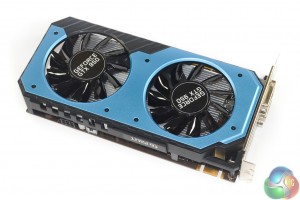
Extending to the GTX 950's features, the card supports the DirectX 12 API at feature level 12.1. A H.265 (HEVC) encoder/decoder engine built into the GPU, along with HDMI 2.0, shout loudly for the GTX 950 to be used inside a gaming HTPC. With the 90W TDP being low enough to comfortably fit inside SFF cases, the ability to output 60Hz video to a 4K TV (most of which do not have DisplayPort connections) is an important feature. HDMI 2.0 is a feature that team red's competitor card cannot offer.
One of the more notable changes between the GTX 75x cards and the GTX 950 is the TDP differential. While the GTX 750 Ti had a 60W TDP, the GTX 950 ups that number to 90W. Approximating TDP as an indicator of power consumption, the 90W rating narrowly tips the GTX 950 into a region where it requires a 6-pin PCIe power connector. This emphasises that Nvidia is focused on gaming performance with its new card, while the GTX 750 Ti, for example, still remains to cater for those wanting a graphics card to run on a PSU without a 6-pin PCIe cable (think Dell, HP, or some SFF units).
You can read more about the GM206 GPU's architecture and feature support in my colleague Allan's GTX 960 review HERE.
Palit ships its GTX 950 StormX Dual in typical packaging for the company. A drivers CD and manual are supplied.
The card measures in at 220mm due to a slight overhang by the Palit's cooler. The cooler is a dual-slot form factor and should fit comfortably inside many smaller mATX or gaming mITX cases. A light blue colour for the cooler shroud should help to enhance a blue-themed build, although it may contradict other coloured themes.
Palit's cooler can switch its fans completely off when the GPU core runs below a certain temperature. So when you are browsing the web or even doing some light gaming, the cooler's fans enter their 0 dB mode. That is positive for users trying to build a quiet system that also has good cooling performance while gaming.
Unfortunately for many budget-conscious enthusiast who still value aesthetics, Palit uses a brown PCB rather than black. This shows up in a well-lit environment, but with white LED strips becoming increasingly popular in cases, it may be noticeable inside a build.
I do not like seeing the sticker on GPU retention bracket screws. This approach designed to prevent users from removing their cooler frustrates me – why should cleaning dust out of the card's heatsink potentially void my warranty if I know what I'm doing?
There is no backplate, as we would expect at this price range.
A single 6-pin power connector feeds the card which uses the GTX 950 GPU rated for a 90W TDP. Palit uses the power overhead to ramp up the factory-shipped clock speeds.
One SLI finger permits 2-way SLI usage. This could be an important factor for gamers who buy the GTX 950 now and may want a cheap-and-cheerful upgrade in a few months/years time.
Outputs are provided in the form of Dual-link DVI-D, DVI-I, HDMI 2.0, and DisplayPort 1.2. I think this is the ideal configuration for a card of GTX 950 performance level and price; gamers with an older secondary monitor can use VGA via the DVI-I port, and those interested in 4K have a choice of HDMI 2.0 or DisplayPort 1.2.
HDMI 2.0 support, providing 60Hz playback at 4K, is a big deal for media enthusiasts and those who may want to drive a pair of 4K monitors (primarily for work or light gaming). AMD's competing R7 370 does not offer HDMI 2.0 support, and it has not gone unnoticed by many potential customers.
The GTX 950 GPU supports usage of four simultaneous display outputs.
Palit extends the small PCB slightly past the 6-pin power connector in order to provide additional rigid mounting area for the dual-fan cooler.
Four Samsung GDDR5 chips form the 2GB of VRAM, while two empty memory chip spaces point towards Palit recycling an older or upcoming PCB design. Four power delivery phases are used and seem to be arranged in a 3+1 configuration.
A pair of 80mm fans (75mm blade-area diameter) force air through the heatsink. Palit says that the design of these fans has been learned from the design of turbojet engines (which should probably be referencing turbofan) in the aerospace industry. That point relates to the blade twist which helps enhance airflow capacity.
A solid aluminium block and fin array remove heat from the GPU and allow it to be dissipated. The design is clearly optimised towards cost-effectiveness as Palit is relying upon the conductivity of aluminium and the fin array design to spread heat across the cooler, rather than use heatpipes to transfer thermal energy.
Out-of-the-box operating frequencies for Palit's card are slightly higher than Nvidia reference values. The core runs at 1064MHz (40MHz greater), boost is 1241MHz (53MHz greater), and memory is 1653MHz (6610MHz effective – 10MHz greater). We recorded a maximum core boost frequency of 1291MHz during gaming in our well-cooled chassis.
We know that the GM206 GPU has far more headroom in it than reference or board partner speeds would suggest, so we pushed to see how far we could overclock Palit's GTX 950 StormX Dual card.
Given Palit's modest out-of-the-box operating frequency, we had no problem achieving a very healthy overclocking boost. The core was increased by 170MHz and memory went up by 1200MHz effective. We recorded a maximum boost core frequency of 1474MHz during gaming.
Overclocking performance is strong, although the Palit card could not quite match the core frequency performance of Asus' STRIX Gaming GTX 950 DC2 OC card due to the latter's stronger power delivery system (and the silicon lottery). That said, Palit's card is cheaper and the frequency boost is still very healthy.
For the review today we are using the latest Nvidia 355.65 drivers which were supplied with the GTX 950 cards by Nvidia themselves. All Nvidia hardware was tested using this driver in order to eliminate performance discrepancies relating to newer driver updates. The AMD cards were all tested with the latest Catalyst 15.7.1 driver.
Unfortunately we could not gather comparison data for the AMD R7 370 graphics card. We spent more than 20 hours in the two days preceding GTX 950 launch trying to fix an issue with two samples of an identical R7 370 card, but to no avail. Instead, we decided to use an old-trusty 2GB Radeon HD 7850 card and manually overclock it to reference R7 370 speeds – 975MHz core and 1400MHz memory. Why the Radeon 7850? Because that is effectively the GCN 1.0 ‘Pitcairn' GPU upon which the AMD's R7 370 (now called Trinidad GPU) is based.
We are not saying that an overclocked Radeon 7850 is an R7 370 (there are some under-the-hood tweaks to memory speed and power management), but the results of the overclocked 7850 can be seen as a form of interpretation of rough performance levels for an R7 370 card. It is worth noting, however, that many R7 370 cards ship with a factory overclock that puts their core frequency above 1GHz. Our old Radeon 7850 simply could not push far enough for us to record performance with a 1GHz+ core clock.
Test System
- Processor: Intel Core i7 5960X ES (4.4GHz OC).
- Memory: 16GB (4x 4GB) Corsair Vengeance LPX 3200MHz DDR4.
- Motherboard: Asus X99-Deluxe.
- System Drive: 500GB Samsung 840.
- CPU Cooler: Corsair H100i.
- Case: NZXT Phantom 630.
- Power Supply: Seasonic Platinum 1000W.
- Operating System: Windows 7 Professional with SP1 64-bit.
Targeting 1920×1080 gamers, we would expect cards in this price range to offer the 60 FPS standard using high or maximum image quality settings. So those are the settings that we will be using in our games.
We try to paint a clear picture of the market by including performance data from Nvidia's higher-end GTX 960 and lower-end GTX 750 Ti. These cards sit either side of the GTX 950 market position. From Team Red, an R9 380 acts as the step-above comparison, while our Radeon 7850 overclocked to R7 370 frequencies gives an insight into the performance of the GTX 950's closet competitor.
Comparison Graphics cards:
- Asus STRIX Gaming GTX 950 DC2 OC 2GB (1165MHz core / 1355MHz boost / 1653MHz memory)
- Palit GTX 750 Ti StormX Dual 2GB (1202MHz core / 1281MHz boost / 1502MHz memory)
- Palit GTX 960 Super JetStream 2GB (1279MHz core / 1342MHz boost / 1800MHz memory)
- Sapphire R9 380 Nitro 4GB (985MHz core / 1450MHz memory)
- HIS Radeon HD 7850 2GB overclocked to reference R7 370 frequencies to give an insight into the R7 370 graphics card (975MHz core / 1400MHz memory)
Software:
Unigine Heaven Benchmark
3DMark
Fraps
Steam Client
FurMark
MSI Afterburner
TechPowerUp GPU-Z
Games:
Battlefield 4
Bioshock Infinite
Grand Theft Auto V
Metro: Last Light
Middle Earth: Shadow of Mordor
Tomb Raider
Game descriptions edited with courtesy from Wikipedia.
3DMark is an essential tool used by millions of gamers, hundreds of hardware review sites and many of the world’s leading manufacturers to measure PC gaming performance.
Futuremark say “Use it to test your PC’s limits and measure the impact of overclocking and tweaking your system. Search our massive results database and see how your PC compares or just admire the graphics and wonder why all PC games don’t look this good.
To get more out of your PC, put 3DMark in your PC.”
Unfortunately we could not run the 3DMark tests using our overclocked Radeon 7850 graphics card as doing so forced the clock speed to revert to their reference levels. This seems to be a bug that was isolated to 3DMark, as all other games and benchmarks run at the fully overclocked speeds.
3DMark graphics score puts Palit's GTX 950 StormX Dual closer to the performance level of its heavily overclocked GTX 750 Ti sibling than that of the GTX 960.
3DMark shows how much benefit overclocking the Maxwell core can bring – the higher out-of-the-box Asus card is faster than Palit's GTX 950, but overclocking the Palit board triggers a sizeable performance boost.
Unigine provides an interesting way to test hardware. It can be easily adapted to various projects due to its elaborated software design and flexible toolset. A lot of their customers claim that they have never seen such extremely-effective code, which is so easy to understand.
Heaven Benchmark is a DirectX 11 GPU benchmark based on advanced Unigine engine from Unigine Corp. It reveals the enchanting magic of floating islands with a tiny village hidden in the cloudy skies. Interactive mode provides emerging experience of exploring the intricate world of steampunk. Efficient and well-architected framework makes Unigine highly scalable:
- Multiple API (DirectX 9 / DirectX 10 / DirectX 11 / OpenGL) render
- Cross-platform: MS Windows (XP, Vista, Windows 7) / Linux
- Full support of 32bit and 64bit systems
- Multicore CPU support
- Little / big endian support (ready for game consoles)
- Powerful C++ API
- Comprehensive performance profiling system
- Flexible XML-based data structures
We set Quality to ‘Ultra', Tessellation to ‘Normal', Anti Aliasing to 4x and the resolution to 1920×1080 (1080p).
Asus' faster-clocked STRIX Gaming GTX 950 DC2 OC manages to outperform the Palit GTX 950 StormX Dual at out-of-the-box levels. Throwing a healthy overclock into the mix allows Palit's cheaper card to close the gap.
Battlefield 4 ’s single-player Campaign takes place in 2020, six years after the events of its predecessor. Tensions between Russia and the United States have been running at a record high, due to a conflict between the two countries that has been running for the last six years. (Wikipedia).
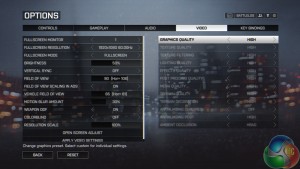
We opted for Battlefield 4's High IQ preset and did not apply AA in order to make the 60 FPS target obtainable for these cards. Our frame rates are recorded using a section of the game.
More of the same is shown with Battlefield 4 – Asus' GTX 950 is a little faster than Palit's out-of-the-box. Palit's cost-effective GTX 950 solution is, however, able to outperform the overclocked Radeon 7850 in Battlefield 4.
Set in 1912, in Bioshock Infinite, players assume the role of former Pinkerton agent Booker DeWitt, sent to the flying city of Columbia on a rescue mission. His target? Elizabeth, imprisoned since childhood.
Bioshock Infinite is set to its highest image quality settings. We test a section of the game.
A 10 FPS gain to average frame rates is presented to Bioshock Infinite when overclocking the Palit card. The GTX 950, when overclocked, is able to run the game at maximum settings with almost 80 FPS and few dips below 50 FPS.
Grand Theft Auto V is an action-adventure game played from either a first-person or third-person view. Players complete missions—linear scenarios with set objectives—to progress through the story.
Outside of missions, players can freely roam the open world. Composed of the San Andreas open countryside area and the fictional city of Los Santos, the world of Grand Theft Auto V is much larger in area than earlier entries in the series.
The world may be fully explored from the beginning of the game without restrictions, although story progress unlocks more gameplay content. (Wikipedia).
We set all of GTA V's primary settings to the Very High level (ambient occlusion was High). MSAA was turned off as it deals a harsh blow to the graphics cards' frame rates. The built-in benchmark is used to gather performance data.
GTA V also presents a sizeable performance boosts for higher Maxwell core clocks. At its factory-clocked level, Palit's card has a 9 FPS lead over the overclocked Radeon 7850 solution.
Overclocking the Palit card results in an average frame rate of 70 FPS, which would allow the IQ settings to be increased slightly.
Metro: Last Light takes place one year after the events of Metro 2033, proceeding from the ending where Artyom chose to call down the missile strike on the Dark Ones. The Rangers have since occupied the D6 military facility, with Artyom having become an official member of the group. Khan, the nomad mystic, arrives at D6 to inform Artyom and the Rangers that a single Dark One survived the missile strike.
4A Games’ proprietary 4A Engine is capable of rendering breathtaking vistas, such as those showing the ruined remnants of Moscow, as well as immersive indoor areas that play with light and shadow, creating hauntingly beautiful scenes akin to those from modern-day photos of Pripyat’s abandoned factories and schools.
We opted for the High quality preset in the ever-demanding Metro: Last Light benchmark. AA was kept off, AF was applied as 16x, and tessellation was set to normal.
Just as anticipated, the same performance trend for Palit's GTX 950 vs Asus' GTX 950 continues in Metro: Last Light. Both cards are able to comfortably outperform an overclocked GTX 750 Ti and Radeon 7850.
In Middle-earth: Shadow of Mordor, the player plays as a ranger by the name of Talion who has wraith-like abilities.In this open world video game, players have the freedom to pursue side quests and roam around the world.
We used Shadow of Mordor's Very High image quality preset and test using the built-in benchmark.
Shadow of Mordor shows good frame rates on the Palit card, however an overclocked 7850 from Team Red is within touching distance of its performance.
This game shows benefits to AMD cards and also likes lots of VRAM. It will happily use more than 2GB of video memory if the card allows it to do so.
Tomb Raider received much acclaim from critics, who praised the graphics, the gameplay and Camilla Luddington’s performance as Lara with many critics agreeing that the game is a solid and much needed reboot of the franchise. Much criticism went to the addition of the multiplayer which many felt was unnecessary. Tomb Raider went on to sell one million copies in forty-eight hours of its release, and has sold 3.4 million copies worldwide so far. (Wikipedia).
We test using the Ultimate quality profile enabled. The in-game benchmark is used.
Tomb Raider performance is boosted close to the magical 60 FPS-mark when Palit's card is overclocked. Even at out-of-the-box levels, an average frame rate of almost 50 FPS when using the Ultimate IQ preset is solid performance.
The tests were performed in a controlled room with temperatures maintained at a constant 25c – a comfortable summer environment for the majority of people reading this. Idle temperatures were measured after sitting at the desktop for 15 minutes. Gaming measurements were acquired by repeating the GTA V benchmark for 15 minutes and taking the stabilised reading. We also have included Furmark results, recording the core temperature after a 15 minute stress test. All fan settings were left on automatic.
Thermal performance from the basic aluminium heatsink and dual-fan cooler is satisfactory, although it is nothing extra-ordinary. Asus' DirectCU II cooler was able to offer noticeably better performance than Palit's, even when overclocked higher and running the fans at a similar noise level.
The basic aluminium block heatsink does a decent job when idling, although 77°C when overclocked and loaded is pushing towards the 80°C mark where the card may start to throttle. The low idle temperatures point towards fast transfer of heat away from the GPU by the aluminium block, but this same level of speed cannot be maintained when the thermal load is increased.
We did not record fan speed going above 56% when overclocked, so there is more potential performance in the overall cooling system. I would recommend setting a custom fan speed profile if overclocking the core heavily.
We measure graphics card acoustic emissions using a dedicated, passively-cooled system. The fan speed level at each point of interest is recorded when the card is in our test system. This fan speed is then manually set using the passively-cooled system and the noise output is recorded.
We measure at a distance of around 12 inches from the card and 12 inches above it. While this is arguably not the most realistic test scenario for acoustic emissions, it allows us to record perceivable difference in the cards' noise outputs while staying within the operating range of our recording hardware.
KitGuru noise guide
10dBA – Normal Breathing/Rustling Leaves
20-25dBA – Whisper
30dBA – High Quality Computer fan
40dBA – A Bubbling Brook, or a Refrigerator
50dBA – Normal Conversation
60dBA – Laughter
70dBA – Vacuum Cleaner or Hairdryer
80dBA – City Traffic or a Garbage Disposal
90dBA – Motorcycle or Lawnmower
100dBA – MP3 player at maximum output
110dBA – Orchestra
120dBA – Front row rock concert/Jet Engine
130dBA – Threshold of Pain
140dBA – Military Jet takeoff/Gunshot (close range)
160dBA – Instant Perforation of eardrum
It is practically impossible to notice any noise difference between any of the real-world fan operating states of either Palit's or Asus' cards.
At full fan speed, the Palit card is slightly quieter, although we see no reason why the fans will ever hit 100% – we recorded a 56% maximum throughout testing.
We measure the amount of power drawn from the wall by the entire test system. Our Core i7-5960X CPU is heavily overclocked and has a large bearing on the power draw readings when it is heavily loaded in GTA V. The important information is the difference in power draw levels between each card.
Power consumption of the Palit card is decent, although the electronics system does not seem to be quite as efficient as that used by Asus (albeit very marginally). The card drops its core voltage when Furmark is applied in order to protect the hardware.
The Palit GTX 950 2GB StormX Dual graphics card is a cost-effective implementation of the GTX 950 GPU. The card features a modest factory overclock but sports a dual-fan cooler to provide quiet operation. Add the light-blue colour into the mix, and Palit's styling may be a reason for some potential buyers to put it on their wishlist.
Performance from the card in its out-of-the-box state is good. A comfortable performance gap is opened up between a factory overclocked GTX 750 Ti and Palit's modestly-overclocked GTX 950. Asus' STRIX GTX 950 card is a little faster at the factory-overclocked frequency, although that solution is also more expensive than Palit's offering.
Overclocking performance from Palit's board was good. We saw the core clock climb as high as 1474MHz during gaming and memory reached 7800MHz effective with relative ease. These frequency boosts opened up a good serving of performance which closed the performance gap to Asus' manually-overclocked solution that was able to achieve a slightly higher core clock.
Acoustic performance from the Palit cooler was great. The 0dB mode worked well and even under load the fans were barely audible. Thermal performance is not as strong as we would have liked though, with the GPU creeping over 70°C at factory clocks and almost hitting 80°C when manually overclocked.
The fan speed never rose above 56%, so there is clearly more cooling potential from Palit's card if you are happy with slightly higher noise output and manual fan speed tuning.
Another negative for gamers who value system appearance is the brown PCB. While this may be a minor point, it may be enough to dissuade some potential customers who want an aesthetically-friendly gaming machine.
We have focussed on the GTX 950 GPU in our review of Asus' STRIX Gaming GTX 950 DirectCU II OC graphics card. The latest addition to the Maxwell family brings heavy competition to the £129 MSRP price point where AMD has been commanding. Nvidia's GPU brings with it many of the Maxwell core's goodies, such as HDMI 2.0, strong overclocking potential, and low power usage.
I expect Palit's GTX 950 StormX Dual to be positioned between the lower- and mid-end of the GTX 950 pricing spectrum. The card is currently available to pre-order for around £135, which puts it around £15 cheaper than Asus' STRIX GTX 950 DC2 OC card. That slight cost saving can be invested elsewhere by a budget-conscious gamer. And with some time spent manually adjusting clock speeds, the performance of Maxwell's GM206 core can be further unlocked by Palit's board.
Discuss on our Facebook page, over HERE.
Pros:
- Positive overclocking performance.
- Handles 1920×1080 high/ultra IQ gaming very well.
- Low noise output from the dual-fan cooler.
- Blue colour may appeal to some gamers seeking a change from red.
- Good power consumption numbers.
- Factory overclocked, albeit quite modestly.
Cons:
- Brown PCB.
- Asus DirectCU II cooler is better with out-of-the-box operation.
- 2GB VRAM of the GTX 950 is cutting it fine for many AAA games.
KitGuru says: A smart, cost-effective offering from Palit that has the potential to unlock much of the GTX 950 GPU's overclocking performance.
 KitGuru KitGuru.net – Tech News | Hardware News | Hardware Reviews | IOS | Mobile | Gaming | Graphics Cards
KitGuru KitGuru.net – Tech News | Hardware News | Hardware Reviews | IOS | Mobile | Gaming | Graphics Cards


